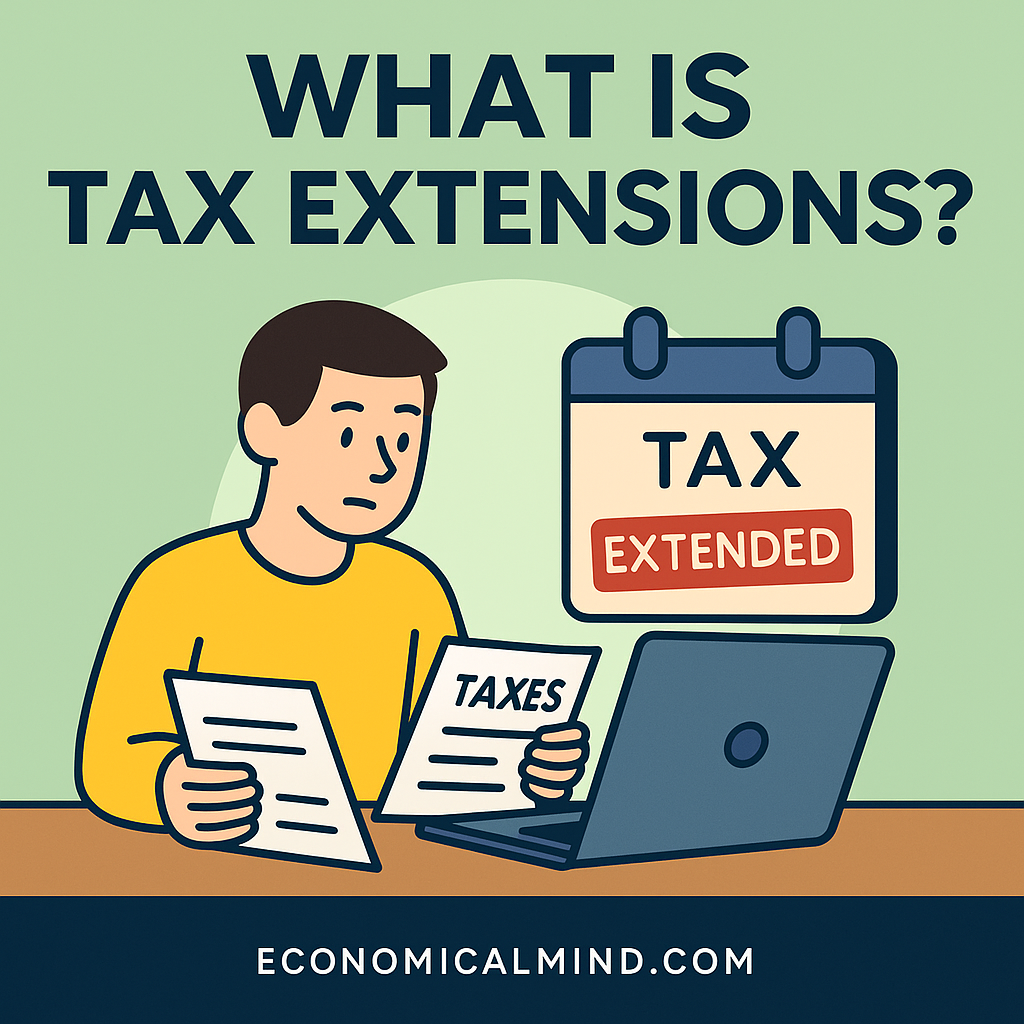
A tax extension gives you extra time to file your tax return — but not extra time to pay what you owe. It’s a useful tool for taxpayers who need more time to gather documents or organize finances, as long as they understand how it works and avoid common pitfalls.
How Tax Extensions Work
When you file a tax extension, the IRS grants an additional six months to submit your return. For most individuals, that moves the filing deadline from April 15 to October 15.
However, if you owe taxes, you must still estimate and pay by the April deadline to avoid penalties and interest.
Example: You file for an extension in April but owe $2,000. You must still pay the $2,000 by the original due date, even though you have until October to complete the paperwork.
You can request an extension by filing Form 4868 electronically or by mail.
Pros of Tax Extensions
1. More Time to File Accurately
An extension prevents you from rushing through your return and making costly mistakes.
Example: You can wait for missing tax forms like K-1s or corrected 1099s.
2. Reduced Risk of Penalties for Late Filing
Filing an extension helps you avoid the larger “failure-to-file” penalty.
Example: The penalty for not filing is usually 5% per month — an extension buys you breathing room.
3. Easier to Work with Tax Professionals
Tax preparers are swamped in April. Extending allows for more personalized attention and better results.
4. Continued Access to Refunds
Even if you’re owed a refund, you won’t lose it as long as you file within the extended deadline.
5. Strategic Timing for Business Owners
Some use extensions to align business or investment documents that come later in the year.
Cons of Tax Extensions
1. Payment Deadline Doesn’t Change
You still need to estimate and pay your taxes by April 15.
Fix: Use IRS Direct Pay or EFTPS to send an estimated payment on time.
2. Interest and Penalties Add Up
If you underpay, you’ll owe interest plus a late-payment penalty.
Fix: Estimate conservatively or slightly overpay to stay safe.
3. Delays in Refunds
Waiting until October means waiting longer to receive any refund owed.
Fix: If you expect a refund, file sooner rather than later.
4. Can Encourage Procrastination
Extra time can lead to unnecessary delay and disorganization.
Fix: Set an internal deadline a month or two before October.
5. Doesn’t Solve Complex Tax Issues
An extension doesn’t reduce what you owe — it just gives you more time to file correctly.
Best Practices for Filing a Tax Extension
1. File Form 4868 Before the Deadline
Submit electronically or by mail before April 15 (or the next business day if it falls on a weekend).
2. Estimate and Pay What You Owe
Use last year’s return or a tax calculator to estimate your payment and avoid penalties.
3. Keep Proof of Submission
Save your confirmation email or certified mail receipt for records.
4. Use Direct Pay for Speed
The IRS Direct Pay system instantly applies your payment to the correct tax year.
5. Avoid Multiple Extensions
October 15 is the final deadline — you can’t extend beyond that for individual returns.
6. Communicate with Your Tax Preparer Early
If you use a CPA, let them know well before April so they can plan accordingly.
7. Stay Organized for October
Use the extension time to gather documents and check for missing forms, not to procrastinate.
Key Takeaway
A tax extension gives you valuable time to file accurately, but it’s not a payment delay. As long as you pay what you owe by April and file by October, it’s an easy way to reduce stress and avoid penalties.
